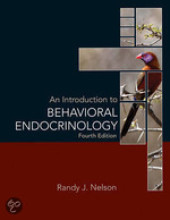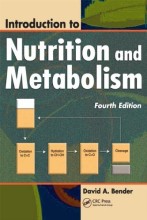Summary: An Overview Of The Immune System | Jacqueline Parkin
- This + 400k other summaries
- A unique study and practice tool
- Never study anything twice again
- Get the grades you hope for
- 100% sure, 100% understanding
Read the summary and the most important questions on An overview of the immune system | Jacqueline Parkin
-
1 Introduction
This is a preview. There are 1 more flashcards available for chapter 1
Show more cards here -
The essential function of the immune system is an interactive host defence is best illustrated when it goes wrong. Name two major aspects on what can go wrong and give an example.
Underactivity; severe infections and tumors of immunodeficiency
Overactivity; allergic and autoimmune disease
-
Immunity is divided into two parts. What are the two parts?
Innate (speed) and adaptive (specificity).
-
2 The innate response
-
2.1 Neutrophil recruitment
This is a preview. There are 1 more flashcards available for chapter 2.1
Show more cards here -
What causes neutrophil leucocytosis?
Granulocyte and granulocyte-macrophage colony stimulating factors, stimulate division of myeloid precursors in the bone marrow, releasing millions of cells into the circulation and causing a characteristic neutrophil leucocytosis.
-
How do recruited neutrophils phagocytose organisms?
By making pseudopodia which form a membrane-bound vesicle around the particle.
-
There are two mechanisms that can kill the organism in the phagolysosome. Explain them.
Oxygen-dependent (respiratory burst); invloves the sequential reduction of ocygen by an NADPH oxidase leading to production of toxic oxygen metabolites.
Oxygen-independent; uses the highly toxic cationic proteins and enzymes contained within the neutrophil cytoplasmic granules.
-
2.2 Complement
This is a preview. There are 4 more flashcards available for chapter 2.2
Show more cards here -
There are three pathways of complement activation that can be driven by the presence of foreign substance. What are these three pathways?
The classical pathway
The mannan binding lectin pathway
Alternative pathway
-
What happens in a complement cascade? Start with C4/C2 cleavage.
- C4/C2 cleavage
- C3 cleavage by C3 convertases
- C3a; activates anaphylatoxins (smooth muscle contraction, vascular permeability, mast cell deganulation)
- C3b (activates opsonisation; stimulating phagocytosis and antigen-presenting cell and B-cell endocytosis)
- Positive feedback loop; alternative pathway
-C5 cleavage by C5 convertase
- C5a; Neutrophil, monocyte chemotactic agent activation, also activates anaphylatoxins (smooth muscle contraction, vascular permeability, mast cell deganulation)
- C5b; Membrane attack complex assembly
- Cell lysis
-
2.3 Eosinophils
This is a preview. There are 1 more flashcards available for chapter 2.3
Show more cards here -
What is the main physiological role of eosinophils?
Protection of the host from parasatic (particularly nematode) infections.
-
2.4 Mast cells and basophils
This is a preview. There are 1 more flashcards available for chapter 2.4
Show more cards here -
There are at least two populations of mast cells, please name them.
Based on:
- Enzymes they contain
- Their tissue location
-
2.5 Natural killer cells
This is a preview. There are 2 more flashcards available for chapter 2.5
Show more cards here -
Natural killer cells don't have the morphology of lymphocytes, but do not bear a specific antigen receptor. They recognise abnormal cells in two ways, how?
1. They bear immunoglobulin receptors (FcR); they bind to antibodycoated targets
2. They have receptors on their surface for MHC Class I; if on interaction with a cell, this receptor is not bound, they lyse the target.
- Higher grades + faster learning
- Never study anything twice
- 100% sure, 100% understanding
































